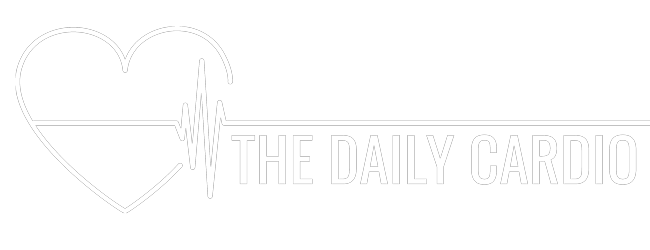The most important factor for improving cardio-respiratory fitness ( a.k.a. cardio or CR) is the intensity of the workout. Changes in CR fitness are directly related to how “hard” an aerobic exercise is performed. The more energy expended per unit of time, the greater the intensity of the exercise, the greater the effect on cardio-respiratory fitness. If your cardio workout isn’t incorporating this principle then you are wasting your time.
You have to know how hard is “hard” to determine if an aerobic exercise like running is producing a CR training effect or if it’s just burning a few calories. The heart rate during work or exercise is an excellent indicator of how much effort you are exerting. Only by keeping track of your heart rate during a workout can you be sure that the intensity is enough to improve your CR fitness level. In other words, your ability to monitor your heart rate is the single most important key to success in CR training.
Training Heart Rate (THR) = Desired Intensity of the Workout
THR is the heart rate at which you need to exercise to get a training effect. The U.S. Army fitness gurus have given us two methods to determine THR. The first method, percent maximum heart rate (% MHR) is simpler to use, while the second method, percent heart rate reserve (% HRR) is more accurate.
% MHR Method
With this method the THR is figured using the estimated maximal heart rate. You can estimate your maximum heart rate (MHR) by subtracting your age from 220. Thus, a 20 year old would have an estimated maximum heart rate (MHR) of 200 beats per minute (220 – 20 = 200).
A person who is just starting out or starting back after a long layoff and are in poor shape should exercise at 70 percent of their MHR; if they are in relatively good shape, at 80 percent of their MHR; and, if they are is in excellent shape, at 90 percent of their MHR.
Examples:
A 20 year old in good physical condition would have a THR of 160 beats per minute (BPM).
220 – 20 = 200 * .80 = 160 BPM.
A 30 year old in good physical condition would have a THR of 152 beats per minute (BPM).
220 – 30 = 190 * .80 = 152 BPM.
A 40 year old in poor physical condition would have a THR of 126 beats per minute (BPM).
220 – 40 = 180 * .70 = 126 BPM.
% HRR Method
A more accurate way to calculate THR is the % HRR method. The range from 60 to 90 % HRR is the THR range people should stay in to improve their CR fitness levels. If you know your general level of CR fitness, you can determine the percentage of HRR is a good starting point for you.
For example, a person in excellent physical condition could start at 85 percent of their HRR. If they are in reasonably good shape, at 70 percent HRR; and if they are in poor shape, at 60 percent HRR.
Most CR workouts should be conducted with the heart rate between 70 to 75 percent HRR to attain, or maintain, an adequate level of fitness. A person who has reached a high level of fitness may derive more benefit from working at a higher percentage of HRR, particularly if they cannot find more than 20 minutes for CR exercise. The rule here is, the less intense the HHR the longer you need exercise and vice versa.
Stay within the HHR 60 to 90 range!
Exercising at any lower percentage of HRR than 60 does not give the heart, muscles, and lungs an adequate training stimulus. Exercising at more than 90 percent can be dangerous. Before anyone begins aerobic training, they should know their THR (the heart rate at which they need to exercise to get a training effect).
Examples:
The example below shows how to figure the THR by using the resting heart rate (RHR) and age to estimate heart rate reserve (HRR). A 20 year old in reasonably good physical shape is the example.
STEP 1: Determine the MHR by subtracting your age from 220. i.e. MHR = 220 – 20 = 200.
STEP 2: Determine the resting heart rate (RHR) in beats per minute (BPM) by counting the resting pulse for 30 seconds, and multiply the count by two. A shorter period can be used, but a 30 second count is more accurate. This count should be taken while you are completely relaxed and rested. For this example we use a RHR of 69 BPM.
STEP 3: Determine the heart rate reserve (HRR) by subtracting the RHR from the estimate MHR. i.e. HRR = 200 – 69 = 131 BPM
STEP 4: Calculate THR by (1) multiplying HRR by the relative fitness level as a percentage and (2) adding the result to the RHR.
For example, our 20 year old in good physical condition will exercise at 70% HRR.
(1) .70 * 131 = 91.7
(2) 91.7 + 69 = 160.7
Results:
In summary, a reasonably fit 20-year-old with a resting heart rate (RHR) of 69 BPM has a training heart rate (THR) goal of 161 BPM.
During aerobic exercise, the body will usually have reached a “Steady State” after five minutes of exercise, and the heart rate will have leveled off. At this time and immediately after exercising, is when you should monitor your heart rate to see if you are within your desired THR range. If your heart rate is below the THR, you must exercise harder to increase your heart rate to the THR. Conversely, if your heart rate is above the THR, you should reduce the intensity to reduce the heart rate to the THR goal.
If you have any medical issues or are unsure, please talk to a doctor before starting any new workout routine.
As always, if you want to learn more about which cardio products that may help you with your cardio journey, checkout all of the great equipment and accessories Amazon has to offer here.

